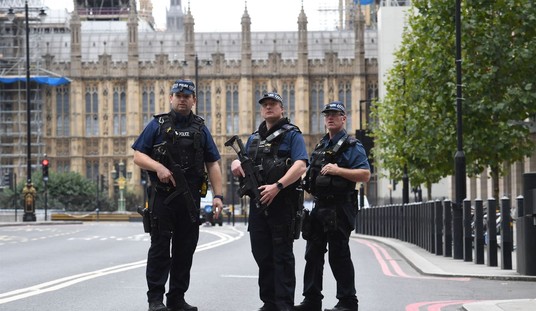Retail massacre, on the other hand, is the work of loners and losers. These massacres usually have elements of nuttiness, malicious imagination and obsession with information that is easily distorted through a lens of madness. That's the way of religious fanatics drawn to terrorism, like the Army major at Fort Hood, Texas, who imagined he was a soldier of Allah. (President Obama wants us to regard the Fort Hood massacre not as terrorism but as "workplace violence," but almost nobody else does.)
Killers can be the mentally mangled with the means to destroy, like the killers at Columbine.
They can also be deranged by something like an aggressive tumor on the brain. Charles Whitman, the sniper in the tower at the University of Texas, was a onetime Eagle Scout who suffered an unknown swelling until it pressed itself into the service of violent behavior. An autopsy discovered the tumor. Science and psychiatry can tell us much in laboratory and asylum, but there's still much we don't know and can't explain, or even attempt to understand, until tragedy disrupts the calm of conventional lives.
Aristotle described tragic theater as exciting the emotions of pity and fear -- "there but for the grace of God go I" -- and such emotions can turn evil in modern everyday life. We look for scapegoats and even identify a few, but the loss of innocent life seems most fathomable by simply recognizing that death by massacre is pure bad luck, just being in the wrong place at the wrong time.
The more we learn more about alleged gunman James Holmes and his habits, the more we're likely to ask whether any drugs played a part in his murderous rampage and whether his obsession with a nonviolent video game contributed to a psychotic personality. Something called "i-craziness" (the "i" is for Internet), or "connection addiction," is thought to contribute to panic, depression, psychosis and even rewiring brains.
Recommended
Scientific research supports anecdotal observations that ultra-smart technology may in certain circumstances control the "controller," or bring on a "reactive psychosis," a form of temporary insanity.
Newsweek magazine, in a cover story on "i-craziness," describes lurid examples, such as the young couple who "nourished" a virtual baby online while their real-life infant died from neglect.
In another example, a young man fatally bludgeoned his mother when she suggested he log off his computer. He then used her credit card to continue with pay-to-play sites.
The planning that went into the Aurora massacre shows that such craziness can be fed from many streams, including the disappointment of a young man accustomed to academic success.
In cruel irony, the new Batman movie was supposed to bring closure to the trilogy directed by Christopher Nolan, but instead raises further questions from real life. The Warner Bros. studio now says it will contribute "a substantial sum" to the victims of the tragedy. The moviemakers can expect less analyzing of the epic's aesthetics, good or bad, than of the massacre that followed the opening. Real life, when forced into the details of drama, can be far less understandable than the human hand dramatizing a story.
Aristotle, who wrote the ancient rules of drama, said spectacle was the weakest part of tragedy. That's why the Greeks kept the gory stuff off stage. When James Holmes made his first court appearance, he certainly looked diminished, not at all what we might have imagined. A sloppy dye job had left his hair in shades of pink, yellow, orange and brown, nothing like the startling mop of the comic-book Joker. He looked more like a careless adolescent than a monstrous villain.
His behavior in the courtroom held more in common with a character in a dull theater of the absurd, not a greater-than-life-size villain. He was drained of menace with not a drop of danger showing in his demeanor. It was easy to understand why he was held in solitary confinement for "his safety," rather than the safety of others.
The horror of one dark night had morphed into memory and loss. If only we could rewind the film in the theater of the real.

























Join the conversation as a VIP Member